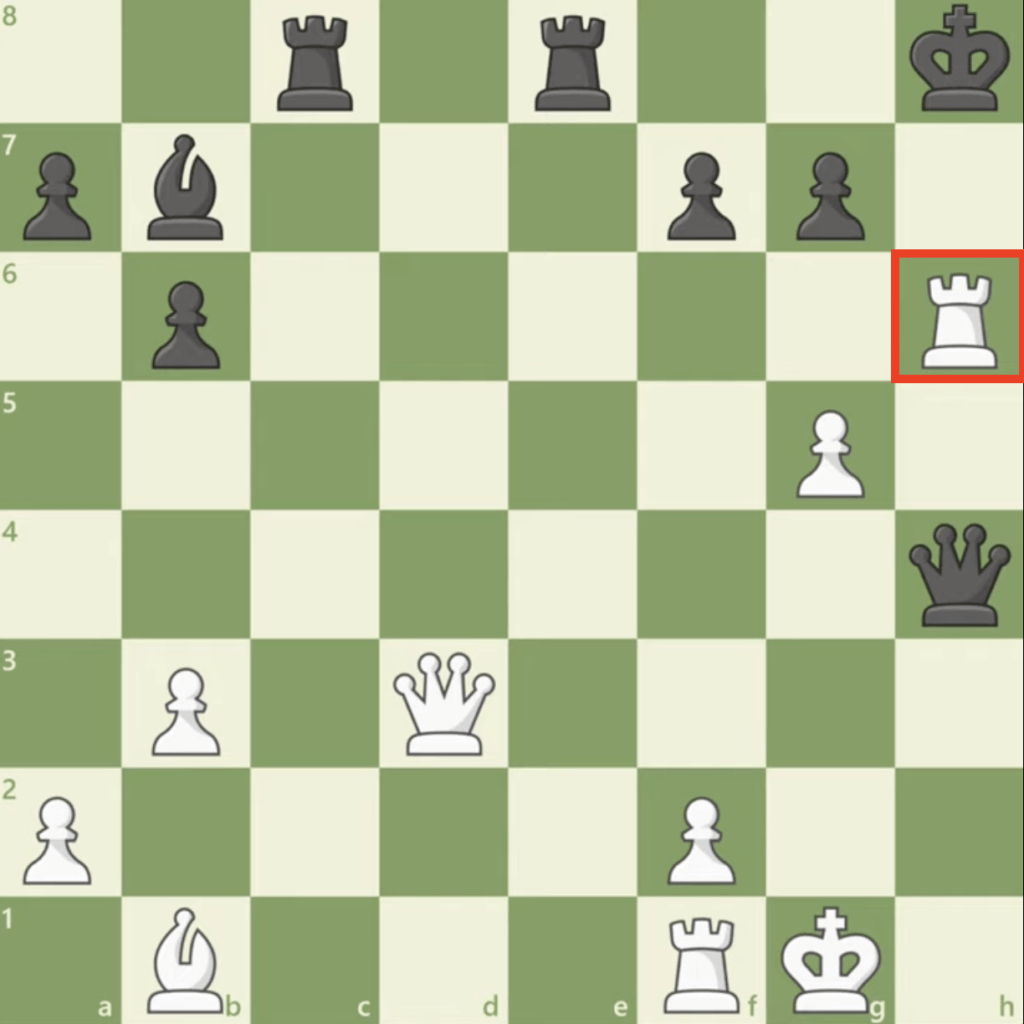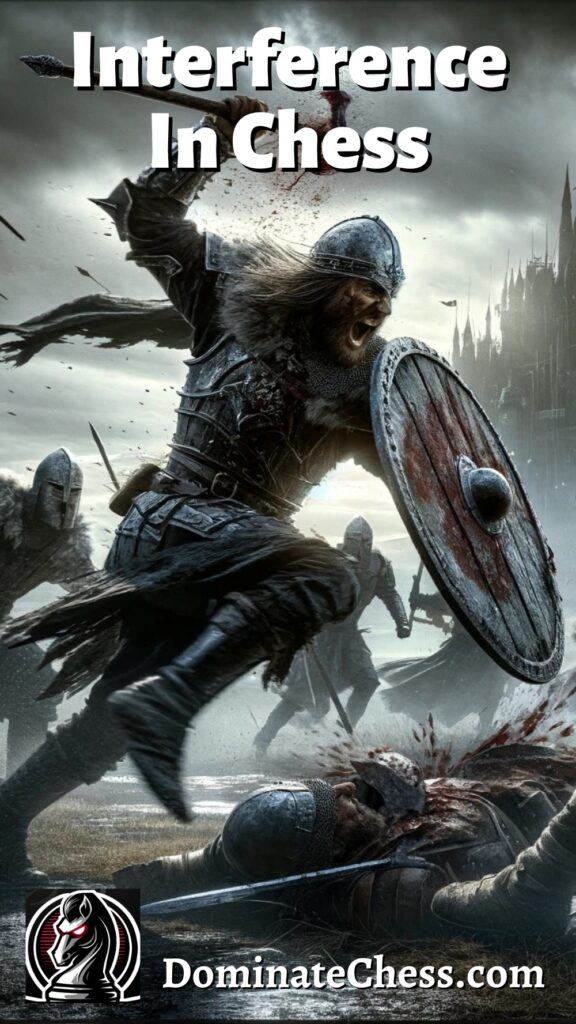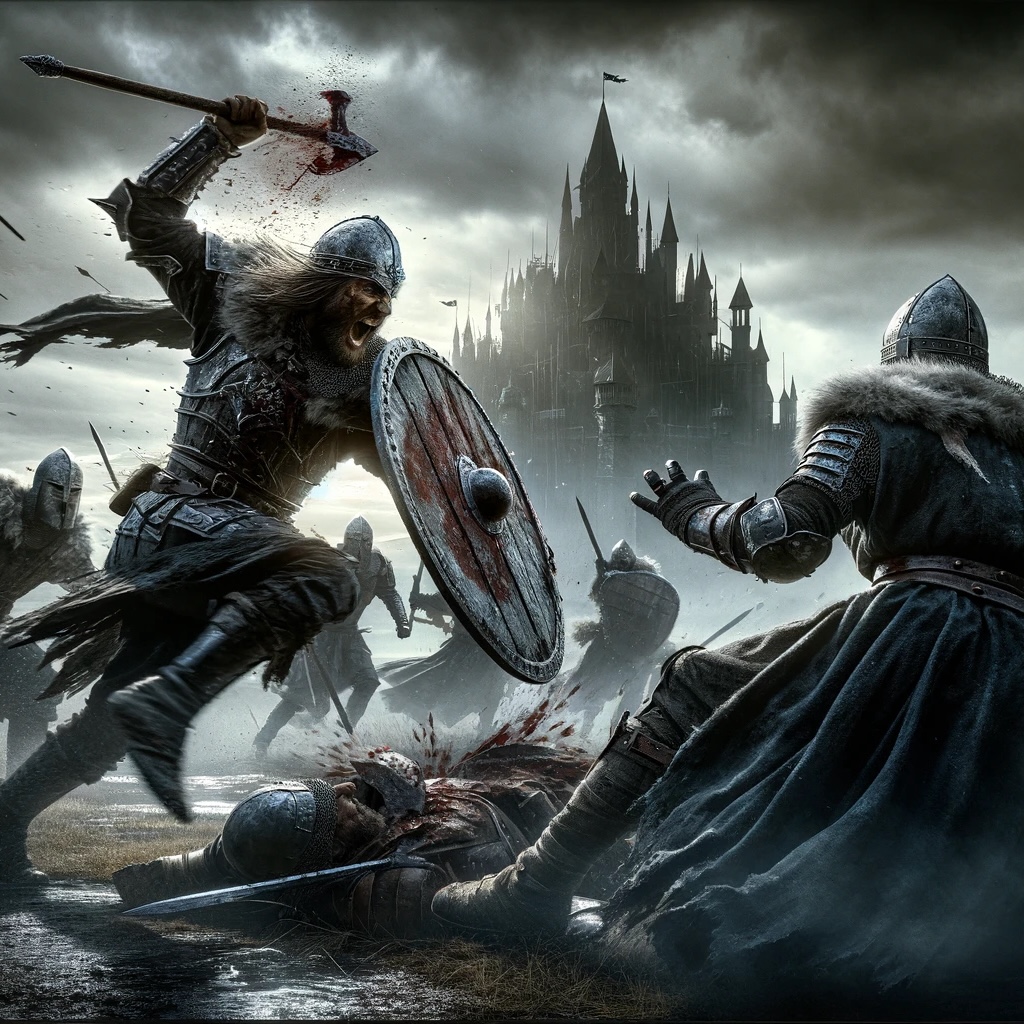Interference is a chess tactic that is often overlooked but can be extremely effective when used correctly. Let’s dive into how you can use this strategy to up your game.
What Is Interference in Chess?
Interference is a move that blocks a critical square, disconnecting the defense. It interrupts critical lines and can leave your opponent unable to guard the attacked piece or square or unable to push forward with their attack.
When it comes to tactics, interference occurs more rarely than say forks and pins. This is because several things have to be in place for the opportunity of interference to happen.
The defended object must be more valuable than the sacrificed piece, and the execution of the interference must also present a threat in and of itself to be effective. But when this does arise, interference can be game-changing.
This video explains interference really well and gives some quality examples of it in action in gameplay
Interference In Action
When you’re in the middle of an attack, the most frustrating thing in the world is when you have your opponent on the ropes but they have a single piece holding their game together.
I’ve had countless times where I’m practically screaming at the board saying “How is it that that ONE piece happens to be in the PERFECT SPOT?”. But hey, it happens, right?
But what if you can run interference that removes that key protection they have in place? Let’s take a look at game play examples.

In this position, White’s queen and bishop are lined up on the b1 to h7 diagonal pointing directly at Black’s king. Black just played Qh4, guarding the h7 square but also threatening checkmate on h1.
Do you see how complex this situation is? Black’s queen not only protects a critical attack but is posing her own checkmate.
On the next turn, White plays the interference tactic Rh6+ (Do you know your chess notation? The + sign at the end of the notation means this move put the opponent in check). This move places Black’s king in check, but look at the beauty of this interference more closely.

White is sacrificing the rook for the greater good here. If Black takes White’s rook with the pawn at g7, White can mate on the very next move with Qh7#. If Black just moves the king out of the way to g8, they lose their queen and get nothing in return.
Here, Black is forced to take rook with Qxh6.
After queen takes the rook, White takes the queen with gxh6. This interference is brilliant as white’s material advantage and attack against black’s king will be too much to handle.
Finding Opportunities for Interference
Would you have been able to spot that opportunity to run interference and grab victory from the Jaws of defeat? Executing interference correctly means having a good understanding of the board and the position of the pieces.
Players should look for situations where an attacking piece is threatening a valuable piece or square, but is being defended by another piece. If the defender can be blocked, then interference may be possible.
Interference can be used as both an offensive and defensive tactic. As you can see from the video and examples above, defending leads directly to attack and vice versa.
This is what makes interference so dramatic. You can truly tip the game on its head with strong interference tactics!
But as with any other bold move, always take into account the consequences of your sacrifice. Does your opponent have other options you’re not seeing? Could you get out of the situation without having to sacrifice? Always remember to consider your opponents possible responses and counterattacks.
Final Thoughts
While opportunities for interference are rare, they can be game-changing. By having a strong understanding of the game and a willingness to take risks, you can find yourself with a brilliant move under your belt that turns the game in your favor!
What do you think? Have you had the opportunity to run interference in a game and turn the tides? Is there anything about interference you don’t quite understand and need more explanation on? Let me know in the comments below! I love hearing from you and I always respond!
Like This Article? Pin It!




Although I am learning about the interference tactics in Chess for the first time, the way it was so clearly explained made it come across to me as more than just a strategy for winning chess games but also a strategic mindset for winning in life.
I have always imagined chess to be more than just a game you enjoyed but one that developed your mind in ways that made you a more thoughtful, strategic and effective individual who would weight the importance or relevance of options and choices before taking a step or making a move. This interference tactic or mindset came across to me as one that I can apply to daily life. I have now decided that I will develop a mindset that will always seek for ways to convert threats to opportunities and weaknesses to strengths like the interference approach teaches.
Thank you for this amazing post.
Nice! Thanks for the comment!
Where was this kind of information when I learned how to play chess so long ago? Your explanations for using interference made sense, to me, and has sparked a renewal for playing the game again.
When I first started to play chess, I didn’t understand the significance, I simply moved pieces until I won or lost. One day, my older cousin and I played a game, and he beat me in 4 moves. I was shocked, I didn’t know any strategies of the game, so I asked him to show me. The next game, I beat him, using those same moves!
This post reminds me that when we learn how to play chess, and we memorize the movements, that’s only the beginning. Chess is a not just a game, it’s a journey. This post indicates that there is much more than simply moving pieces on the chess board.
Rudy
That’s why I love the game so much! Thanks for the comment!